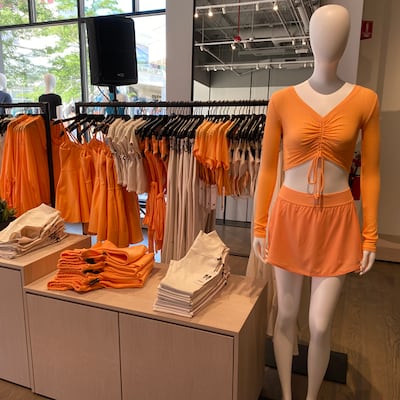The Paradox of Prestige: Understanding Why the Poor Invest in Luxury G…
페이지 정보

본문
The decision of low-income individuals to purchase luxury items often sparks confusion and criticism. Why would someone struggling financially prioritize a designer handbag, a high-end smartphone, or branded sneakers over essentials like food, housing, or savings? If you have any thoughts relating to exactly where and how to use Yupoo best reps, you can make contact with us at the web-site. This phenomenon, while seemingly irrational, is deeply rooted in psychological, social, and economic factors. By examining the motivations behind such choices, we uncover a complex interplay of identity, aspiration, and systemic inequality.
The Power of Social Signaling
Humans are inherently social beings, and status symbols have long served as tools for communication. Luxury goods act as visible markers of success, taste, and belonging. For marginalized groups, these items often become a way to counteract stereotypes of poverty or inferiority. A study in Social Psychological and Personality Science found that people from lower socioeconomic backgrounds are more likely to spend on conspicuous goods to signal competence and gain respect in environments where they feel undervalued.

In communities where economic mobility is limited, displaying wealth through material possessions can create an illusion of upward mobility. A luxury item becomes a shortcut to social acceptance, allowing individuals to bypass prejudiced assumptions about their worth. For example, a person wearing a Rolex watch or carrying a Louis Vuitton bag may be treated with greater deference in public spaces, temporarily offsetting the stigma of poverty.
Psychological Compensation and Self-Worth
Financial hardship often erodes self-esteem. Sociologist Thorstein Veblen’s concept of "conspicuous consumption" highlights how luxury purchases serve as a psychological balm, offering a fleeting sense of control and dignity. For someone facing daily struggles, owning a coveted item can provide emotional respite—a tangible reminder that they are more than their circumstances.
This behavior is also tied to the "scarcity mindset." Research by Harvard economist Sendhil Mullainathan reveals that poverty consumes mental bandwidth, heightening focus on immediate needs over long-term planning. Luxury purchases, while financially risky, deliver instant gratification and a temporary escape from stress. A pair of Air Jordans or a Gucci belt becomes a reward for enduring hardship, a small victory in an otherwise relentless grind.
The Influence of Marketing and Cultural Narratives
Luxury brands invest heavily in crafting narratives of exclusivity and aspiration. Advertising campaigns equate ownership of their products with success, happiness, and social acceptance. For low-income consumers, these messages resonate powerfully. Social media amplifies this effect: platforms like Instagram glorify luxury lifestyles, blurring the line between reality and aspiration.
Moreover, the democratization of luxury—through installment plans, counterfeit markets, or secondhand platforms—makes these items more accessible. A $1,000 smartphone can be financed over two years, while pre-owned designer goods sell at a fraction of their retail price. This creates an illusion of attainability, encouraging individuals to stretch their budgets for a taste of the "good life."
The Role of Relative Deprivation
Economic inequality exacerbates the desire for luxury goods. The "relative income hypothesis," proposed by economist James Duesenberry, argues that spending habits are influenced less by absolute income and more by comparisons to others. When surrounded by wealth—whether in affluent neighborhoods or through media—the poor become acutely aware of their disadvantage. Luxury purchases then act as a coping mechanism, reducing the psychological discomfort of feeling "left behind."
This dynamic is evident in urban areas where gentrification displaces low-income residents. As luxury condos and high-end stores encroach on their neighborhoods, long-term residents may cling to status symbols to assert their place in a changing world. Similarly, in developing nations, the proliferation of global brands fuels demand for luxury items as emblems of modernity and progress.
Aspirational Investment vs. Survival Logic
Critics often frame luxury spending by the poor as irresponsible, but this perspective overlooks nuanced realities. For some, these purchases represent strategic investments. A well-dressed job applicant, for instance, may fare better in interviews, as appearance influences hiring decisions. A reliable luxury car might facilitate gig economy work, offering higher earnings than public transit.
Others view luxury goods as durable assets. In unstable economies with volatile currencies, items like gold jewelry or designer bags retain value better than cash. While not ideal, these purchases reflect adaptive strategies within constrained systems.
The Cycle of Inequality and Consumer Culture
The allure of luxury goods among low-income groups also underscores broader systemic failures. When education, healthcare, and housing remain inaccessible, material possessions become one of the few avenues for self-expression and agency. Consumer culture steps in to fill the void left by inadequate social safety nets, selling dreams of status to those denied opportunities for genuine advancement.
This cycle perpetuates inequality. Luxury brands profit from the aspirations of the marginalized, while policymakers and corporations evade accountability for addressing poverty’s root causes. The result is a society where the poor are encouraged to buy into a system that rarely rewards them beyond superficial symbols.
Toward a Compassionate Understanding
Judging low-income individuals for their spending habits ignores the structural forces shaping their choices. Rather than moralizing, a compassionate approach recognizes that luxury purchases are often acts of resilience—a way to reclaim dignity in a world that equates worth with wealth. Addressing this issue requires systemic change: living wages, affordable education, and inclusive policies that reduce the need for status-seeking compensation.
In the meantime, understanding the motivations behind these choices fosters empathy. Behind every luxury item owned by someone in poverty lies a story of aspiration, defiance, and the universal human desire to be seen.
- 이전글M88 – Thiên Đường Cá Cược Trực Tuyến 25.07.30
- 다음글Исследуем грани казино 25.07.30
댓글목록
등록된 댓글이 없습니다.
